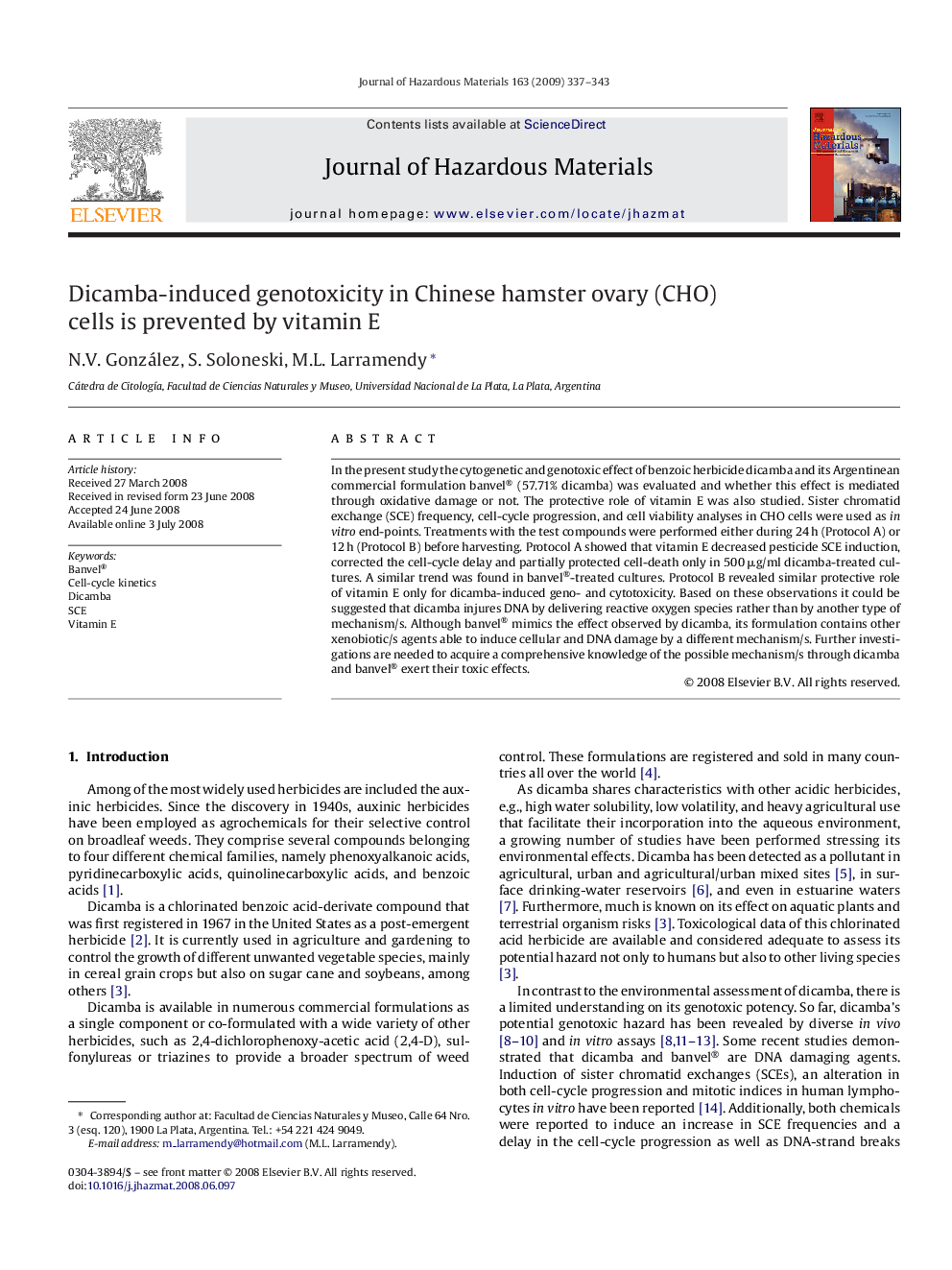| Article ID | Journal | Published Year | Pages | File Type |
|---|---|---|---|---|
| 581963 | Journal of Hazardous Materials | 2009 | 7 Pages |
Abstract
In the present study the cytogenetic and genotoxic effect of benzoic herbicide dicamba and its Argentinean commercial formulation banvel® (57.71% dicamba) was evaluated and whether this effect is mediated through oxidative damage or not. The protective role of vitamin E was also studied. Sister chromatid exchange (SCE) frequency, cell-cycle progression, and cell viability analyses in CHO cells were used as in vitro end-points. Treatments with the test compounds were performed either during 24 h (Protocol A) or 12 h (Protocol B) before harvesting. Protocol A showed that vitamin E decreased pesticide SCE induction, corrected the cell-cycle delay and partially protected cell-death only in 500 μg/ml dicamba-treated cultures. A similar trend was found in banvel®-treated cultures. Protocol B revealed similar protective role of vitamin E only for dicamba-induced geno- and cytotoxicity. Based on these observations it could be suggested that dicamba injures DNA by delivering reactive oxygen species rather than by another type of mechanism/s. Although banvel® mimics the effect observed by dicamba, its formulation contains other xenobiotic/s agents able to induce cellular and DNA damage by a different mechanism/s. Further investigations are needed to acquire a comprehensive knowledge of the possible mechanism/s through dicamba and banvel® exert their toxic effects.
Related Topics
Physical Sciences and Engineering
Chemical Engineering
Chemical Health and Safety
Authors
N.V. González, S. Soloneski, M.L. Larramendy,
